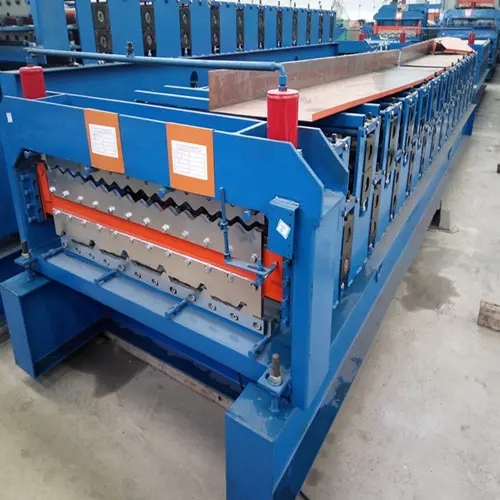
Wall Angle Roll Forming Machine An Overview
The construction and manufacturing industries are constantly evolving, and one of the key innovations that have emerged in recent years is the wall angle roll forming machine. This advanced piece of equipment plays a vital role in producing precise and high-quality wall angles, which are essential components in the construction of various structures, including residential and commercial buildings. In this article, we will explore the functions, benefits, and operational principles of wall angle roll forming machines.
What is a Wall Angle Roll Forming Machine?
A wall angle roll forming machine is a specialized device designed to manufacture wall angles that serve as structural supports in wall construction. These angles are typically made from materials such as steel or aluminum and are formed by continuously feeding a metal coil through a series of rollers that shape it into the desired profile. The end result is a strong, durable angle that can be used to construct steel frames, supports, and other structural elements in buildings.
Key Functions of the Wall Angle Roll Forming Machine
The primary function of a wall angle roll forming machine is to transform flat metal sheets or coils into specific geometric shapes that meet the needs of construction projects. The machine can produce a variety of wall angle profiles, including equal and unequal angles, with precise dimensions to ensure optimal fit and performance in construction applications.
In addition to forming angles, many modern machines are equipped with features that enhance their versatility. For instance, some machines can handle different material types, thicknesses, and widths, allowing manufacturers to cater to diverse customer requirements. Moreover, advanced technology has made it possible for these machines to operate at high speeds without sacrificing accuracy, which is crucial for meeting production deadlines in fast-paced construction environments.
Benefits of Using Wall Angle Roll Forming Machines
1. Cost Efficiency Automated roll forming machines significantly reduce labor costs by minimizing manual intervention. With the ability to produce high volumes of angles quickly, manufacturers can save on overhead costs while still meeting market demand.

2. Precision and Consistency The use of computerized controls ensures that each angle produced is consistent in quality and specifications. This precision minimizes waste and errors, ultimately leading to a more cost-effective manufacturing process.
3. Versatility As mentioned earlier, wall angle roll forming machines can accommodate a variety of materials and profiles, making them suitable for different construction applications. This flexibility allows manufacturers to expand their product offerings and cater to various market segments.
4. Durability The wall angles produced by roll forming machines are robust and long-lasting, contributing to enhanced structural integrity in buildings. High-quality materials and precise manufacturing techniques ensure that the angles can withstand the rigors of construction and the test of time.
5. Automation and Control Many modern roll forming machines are equipped with advanced automation features, including programmable settings and real-time monitoring. This technology not only improves operational efficiency but also allows for quick adjustments to be made as needed, enhancing overall production flexibility.
Operational Principles
The operational process of a wall angle roll forming machine begins with the feeding of raw metal coils into the machine. The coils are guided through a series of rollers that progressively shape the metal into the desired angle profile. Each roller is designed to alter the metal's shape gradually, ensuring that the final product meets the specified dimensions accurately.
Once formed, the angles may undergo additional processes such as cutting, punching, or welding, depending on the requirements of the final product. The entire operation is typically controlled via a computer interface, allowing operators to monitor production, troubleshoot issues, and make necessary adjustments seamlessly.
Conclusion
Wall angle roll forming machines are an essential component in modern construction and manufacturing. By providing efficient, precise, and versatile solutions for producing wall angles, these machines support the development of robust and reliable structures. As technology continues to advance, we can expect further improvements in the capabilities and performance of wall angle roll forming machines, making them an even more integral part of the construction industry.